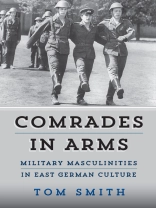Without question, the East German National People’s Army was a profoundly masculine institution that emphasized traditional ideals of stoicism, sacrifice, and physical courage. Nonetheless, as this innovative study demonstrates, depictions of the military in the film and literature of the GDR were far more nuanced and ambivalent. Departing from past studies that have found in such portrayals an unchanging, idealized masculinity, Comrades in Arms shows how cultural works both before and after reunification place violence, physical vulnerability, and military theatricality, as well as conscripts’ powerful emotions and desires, at the center of soldiers’ lives and the military institution itself.
Tabella dei contenuti
Illustrations
Abbreviations
Acknowledgements
Introduction
Part I: Military Masculine Ideals and their Limits
Chapter 1. Pluralizing the GDR’s Socialist Soldier Personality
Chapter 2. Screen Violence and the Limits of Masculine Ideals
Part II: Challenging Performances
Chapter 3. The Vulnerable Body in Uniform
Chapter 4. Retro Masculinity and Military Theatricality
Part III: Challenging Feelings
Chapter 5. Shame, Emotions and Military Masculinities
Chapter 6. Same-Sex Desire, Archival Narration and the NVA’s Closet
Conclusion
Glossary: Selected Ranks in the Nationale Volksarmee with British and US Equivalents
Bibliography
Index
Circa l’autore
Tom Smith is a Lecturer in the School of Modern Languages at the University of St Andrews.












